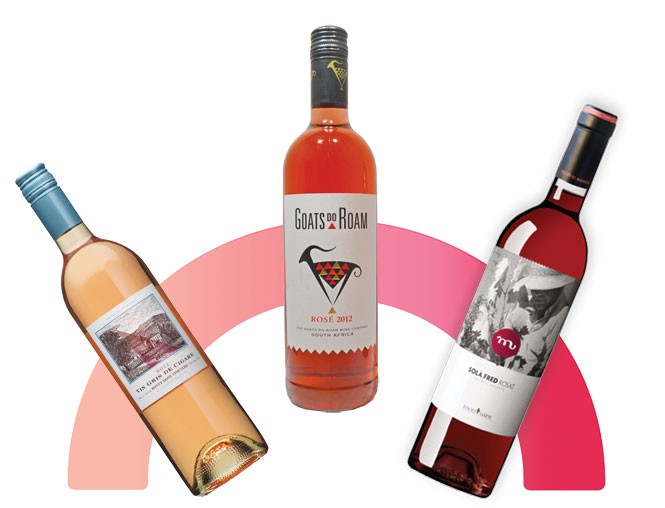Rosé Redux
Underrated pink wine has the best of both worlds at easy-to-afford prices
By Ted Scheffler @critic1Although I love it all year 'round, the dogs days of summer are indisputably the ideal time to open a bottle of Rosé wine. I've written quite a bit about Rosé's temptations in the past, so I won't belabor the point here. To recap, though, I think of Rosé as the Rodney Dangerfield of the wine world: It gets no respect, although that's changing, thankfully. Fewer people today are as prone to equate Rosé wine with White Zinfandel, American's alcohol-infused Kool-Aid.
Remember that most Rosé is a pinkish-red wine that drinks like a white wine. The red hues in Rosé come from very brief grape skin contact with the actual juice—enough to give the wine a little color and body, but not enough to impart much in the way of tannins. And, unlike most red wine, Rosé wines should be served chilled, more akin to the temperature you'd serve a light white wine. Its versatility with food makes Rosé a slam dunk for picnics, barbecues and to sip on the patio while dreaming of Provençe.
Another attraction of drinking Rosé is its budgetary benefit. Although some high-end French Rosé can get a little pricey, most bottles of decent Rosé can be had for under $20. Here is a smattering of some Rosé wines that I've found to be good values this summer.
Farview Goats Do Roam Rosé ($7.99) from South Africa—the name is a witty play on France's Côtes du Rhône—is sort of a "training wheels" wine. Even folks who eschew wine generally can find something to love in this quaffable, strawberry-hued juice. It's a blend of red-wine grapes that you'd normally expect to produce an intense, tannic wine: Shiraz, Grenache, Gamay Noir and Mourvèdre. But that's part of the fun—and one of the winemaker's challenges—in producing Rosé: knowing precisely when to take the juice off the grape skins. It's a decision that determines everything from the color and intensity of the wine to the tannin structure and the wine's texture. For the low price, Goats do Roam gets it right.
Located in Spain's Priorat region, Celler El Masroig produces a 90 percent Grenache and 10 percent Syrah Rosé called Solà Fred Rosat ($12.99) that I enjoy. The nearly neon pink color of the wine belies its subtle charms. It's a wine that seems to have been created with tapas in mind—a light-but-lovely match for gambas al ajillo and tortilla Española.
A nice bang-for-the-buck pink wine from France is Les Vignes Rosé de Bila-Haut ($12.14), a wine produced by Michel Chapoutier in Côtes de Roussillon, Languedoc. This is an attractive blend of Cinsault (which imparts floral aromas and red fruit flavors) and Grenache (offering citrus notes and crisp minerality). Fun fact: The small cross symbol that forms the "T" in Bila-Haut pays tribute to the Knights Templar, who once took refuge in the house on the estate now known as The House of Bila.
Perennially one of my go-to value Rosés, Yalumba Y-Series Sangiovese Rosé ($10.99) never fails to please. This Southern Aussie wine is a party on the palate with pomegranate, cranberry, strawberry and apple flavors, all crisp and zingy with a citrusy finish. For something out of the ordinary, sip some with lox and cream cheese on a bagel.
Two of my favorite American Rosé makers aren't really known for their Rosé. Nonetheless, great winemakers tend to make great wines across the board, and Vin Gris De Cigare ($16.95) from Bonny Doon Vineyards and Bucklin Old Hill Ranch Rosé ($16.99) prove the point.
More by Ted Scheffler
-
Flavor on the Western Front
Nomad Eatery ups the ante for off-airport eats.
- Dec 13, 2017
-
Under the Christmas Tree
Holiday gifts for cooks, foodies and winos
- Dec 6, 2017
-
Spreading the Love
Amour Café creates simple yet scrumptious fare.
- Nov 29, 2017
- More »





